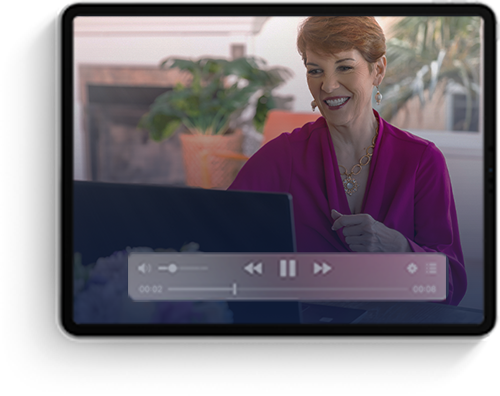From Employee to Entrepreneur: How to Start Your Own Interior Design Firm
When you’ve been working under someone else’s umbrella—whether it’s a design firm, a big-box retailer, or a showroom—it’s easy to feel like you’re playing it safe. But that tug you’re feeling? That burning desire to step out on your own? It’s more than ambition—it’s readiness.
EPISODE HIGHLIGHTS
02:00 – Mindset shift from employee to CEO
23:00 – Why you only need 1–3 services to start
29:00 – Flat fee vs. hourly and how to hit 6-figures
40:00 – How to handle fear (and why action wins)
55:00 – Creative ways to build a portfolio from scratch
Learning how to start your own interior design business isn’t just about changing your business card. It’s about stepping into a new identity: principal, creative director, CEO. The mindset shift is real, and it’s necessary.
You’re not behind. You’re not too late. You do have what it takes.
Your New Mantra
Write this down and keep it where you can see it:
I am a talented design professional and principal who has the ambition and skill to build a thriving business. What I don’t know, I’ll learn. Mistakes are my best lessons.
We often fear mistakes because we think they define us. They don’t. They shape us. What slows your growth isn’t failure—it’s the fear of failing.
Success often looks like stumbling forward. Be willing to learn, adjust, and move again. The only real mistake is repeating the same one over and over—that’s not a lesson, that’s a pattern.
Don’t Wait Until You Feel Perfectly Ready
When you’re learning how to start your own interior design business, it’s easy to think you need more credentials or a bigger setup.
You don’t need:
Another certification.
A fancy office with big rent.
To know everything about business
You do need:
Courage. A plan. And vision.
Create a vision board—physical or digital—and use it to create future pull when fear wants to hold you back.
The Tactical Start: What to Do First Talk—Letting Go of Control
If you’ve already stepped out—or you’re about to—start with these essentials:
1. Define Your Services
Pick no more than three services. You’ll look like a specialist (which clients trust more) and avoid burnout from trying to be everything to everyone.
If you don’t enjoy e-design, don’t offer it. If you love remodels but not furnishings, say so. Align your services with what lights you up—that’s where your best work and best clients will meet.
2. Set Your Pricing Model
Start with a flat fee or minimum design fee, not hourly. It’s easier for clients to understand and for you to scale.
Let’s say your minimum design fee is $10K. One client per month? That’s $120K in a year—and that’s before markup or procurement fees.
If you must do hourly, don’t charge less than $150/hour and require a retainer package—no fewer than 20 hours, paid in advance.
3. Choose a Name + Branding (Without Overthinking It)
Your name works. Evolve it later. Done beats perfect. You’re a designer, not a branding specialist or website developer. Don’t fall into the trap of overdesigning your own business before you’ve even started serving clients.
Need help? Use AI tools like ChatGPT or outsource the design to stay focused on what you do best: interiors.
4. Open a Business Bank Account + Establish Your Entity
LLC or S-Corp—either is fine. What matters is making it real. Hire a bookkeeper early and get a trustworthy accountant. Don’t wait until tax season to get organized.
5. Get a Strong Letter of Agreement
Do not fly without a net. A robust agreement—7 to 12 pages—protects your practice, your profit, and your peace of mind. You can find a well crafted contract, approved by attorneys in multiple states, and leveraged by designers across the country, here melissagalt.com/designagreement.
When you’re learning how to start your own interior design business, this is one of the smartest early steps you can take.
6. Tell Everyone You’ve Launched
Don’t keep it to yourself. Tell everyone.
✔️ Past clients
✔️ Friends
✔️ Family
✔️ College alumni
✔️ Book club, gym buddies, tennis/golf partners
✔️ Reps and vendors you’ve worked with
Make a physical announcement card. Have it printed on cardstock. Hand-address the envelopes. Skip the business name on the outside—make sure it gets opened.
Don’t rely on digital alone. You’ll stand out in the mailbox, better than email, where people actually pay attention.
Let’s Talk About Fear
Starting something new will wake up every fear you’ve got. That’s normal. Your brain is just trying to keep you safe. Give it a name if it helps—but don’t let it run the show.
The antidote to fear? Action.
Not knowing who to hire?
Not sure your systems are perfect?
Worried you’ll be judged?
That’s all noise. Every designer you admire was once exactly where you are—nervous and unsure.
Take small, imperfect, consistent action. You don’t need 10 clients. You need one. You don’t need the perfect logo. You need to show up.
What If You Don’t Have a Portfolio Yet?
That doesn’t have to stop you. Every designer starts somewhere—and not all portfolios begin with paid client work. When you’re figuring out how to start your own interior design business, showcasing your talent is what matters most.
✔️ Use past work—if your previous firm allows it.
Some firms will give you the green light to share what you helped create. One of my clients launched his entire business with a lookbook from past firm work—and it attracted dream clients right out of the gate.
✔️ Reach out to past clients.
If you built trust during your time at another firm, some clients may follow you. One designer I work with landed her first independent luxury project through a former client connection.
✔️ Get permission with attribution.
Even if the firm won’t let you claim the work outright, you may be able to use it with clear credit. That credibility alone can help build your authority and confidence.
✔️ Build your presence on Instagram.
Another designer had zero images she could use—but she leaned into showing her face, her voice, and her process on Instagram. She built a real, organic following of 80K in under a year and landed remote and local projects without a single portfolio image.
✔️ Create your own sample projects.
Use your own home. Use photo-realistic renderings. Even AI-generated spaces can work—if they look and feel authentic. This is your opportunity for unfettered creativity without client limitations. Make it count. And yes, creating imaginary client backstories is totally fair game.
Your portfolio doesn’t have to be built on billable work—it just has to show your talent.
Next Steps to Make It Real
If you’re still wondering how to start your own interior design business in a way that feels intentional and professional, these are the steps that lay the foundation:
1. Get a simple website
Include: About, Services or Process (7–10 steps), Portfolio, Testimonials woven throughout, and a strong Contact page. Use Houzz, Wix, or Squarespace. Hire someone to do it—even if you use a template.
2. Create an in-depth inquiry form
This filters out unqualified leads and gets you into contact with potential ideal clients faster. Use Calendly, Acuity, or ScheduleOnce. Reference Episodes 103–105 for help.
3. Establish your client onboarding and include a welcome kit
Dubsado is an option, or select a template from Etsy.
4. Get active on social media
Avoid juggling personal and business accounts. Use your personal profile for behind-the-scenes and stories. Follow clients, not just fellow designers. Build relationships with profit partners—those who serve your ideal client without competing with you.
5. Send out your announcement
Digital AND physical. Don’t keep your launch a secret. Be seen. Be found. Get known.
6. Show up at events
Get to local business mixers, social meetups, and community groups. Remember—proximity delivers profits.
Your Talent Deserves the Spotlight
You were never meant to stay small. The world needs your vision, your creativity, and your leadership.
Starting your own firm is a leap, yes. But it’s also a calling. If you’ve been searching for how to start your own interior design business in a way that’s aligned with your talent and goals, this is it.
When you’re ready to go, go boldly. Perfection is the enemy of done.
And when you look back a year from now? You’ll be glad you started today.
If you’re ready to stop playing small and start building the firm you’ve been dreaming about, clarity and strategy are your first steps.
That’s exactly what we’ll create together during a complimentary Design Business Assessment. We’ll take a close look at your design practice, identify where you are, and map out a plan to close the gap between that and where you want to be.
Book yours now at melissagalt.com/DBA
You’ve got this—because I’ve got you.





